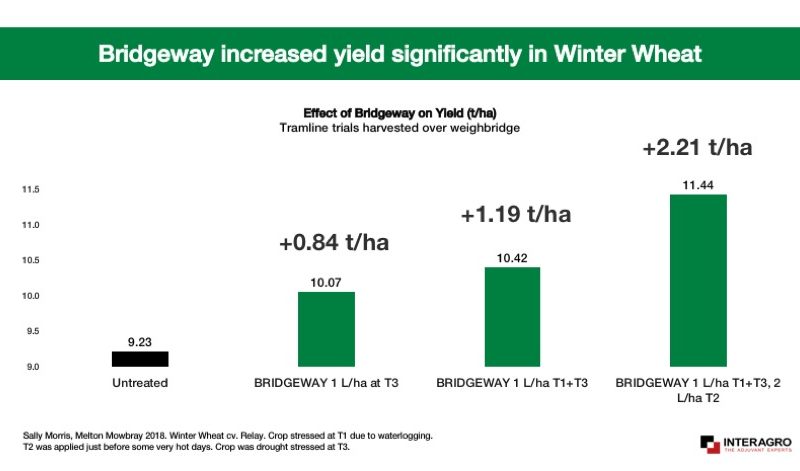Hutchinsons Agronomist Sally Morris observed an uplift in yield where Bridgeway was applied to tramlines in Wheat.
The issue
Hutchinsons agronomist Sally Morris set out to determine the benefits of Bridgeway using a tramline trial within a commercial crop of Feed Wheat Relay, near Melton Mowbray. The 24m tramlines ranged from 534-570m in length from edge of headland to edge of headland, measured using GPS in the tractor. Bridgeway was applied at T1 (1.0 L/ha), T2 (2.0 L/ha) and T3 (1.0 L/ha) on tramline one, at T1 (1.0 L/ha) and T3 (1.0 L/ha) on tramline two and tramline three received a single application at T3 (1.0 L/ha). Tramline four was assessed as an untreated control. “It was a particularly difficult season on this heavy land site, clay with a low stone content. At T1 the crop was stressed due to waterlogging after the wet conditions in early Spring and at T3, the opposite was true, with the crop suffering from drought stress.”
The result
The tramline with the three Bridgeway treatments yielded significantly higher than the untreated tramline, with a 2.208t/ha uplift in yield. All of the Bridgeway treated tramlines yielded higher than the rest of the field average.”
Sally describes the results as encouraging and she also intends to refine her application timings in 2019 to try and apply Bridgeway before the crop is under stress to provide a buffer.
This season I believe we may have got the Bridgeway on at the right time without realising. The T2 application went on just before some very hot days and prolonged dry conditions. There’s still lots to learn but growers are interested in anything that can help protect yield and Bridgeway seems to be consistently making a difference.
Sally Morris, Agronomist, Hutchinsons








